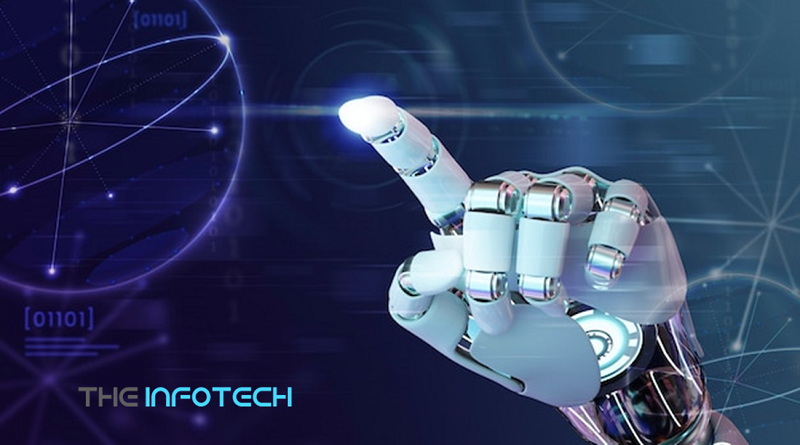Machine learning in Robotics
What is robotics?
Engineering’s field of robotics deals with the creation, design, production, and use of robots. The goal of the field of robotics is to develop smart machines that can help people in a variety of ways.
There are many different types of robotics. A robot could be a machine that looks like a person, or it could be a robotic application like robotic process automation (RPA), which mimics how people interact with software to carry out routine, rule-based tasks.
Although the study of robotics and the investigation of the capabilities and possible applications of robots has expanded significantly in the 20th century, the concept is unquestionably not a new one.
The early history of robotics
The word robot is expanded upon in the term robotics. In 1920, Czech playwright Karel Cepek used the term for the first time in his play Rossum’s Universal Robots.
But according to Oxford English Dictionary, Isaac Asimov, a science fiction writer, is credited with coining the phrase in the 1940s.
Three guiding principles for the conduct of intelligent machines and autonomous robots were put forth by Asimov in his narrative.
Asimov’s Three Laws of Robotics remain valid :
- Robots must never harm human beings.
- Robots must follow instructions from humans without violating rule 1.
- Robots must protect themselves without violating the other rules.
The first programmable robot, Unimate , was developed in 1961 to transport hot metal parts from a die-cast process, two decades later and based on concepts from the 1950s.
Robotics applications
Industrial robots and a wide variety of other robots are utilized nowadays to carry out monotonous tasks. They could appear as a robotic exoskeleton, a robotic arm, or more conventional humanoid robots.
Manufacturers and warehouses, including those owned by Amazon, Devol , Best Buy, and others, use industrial robots and robot arms.
A robot or robotic system’s actions are guided by a combination of computer programming and algorithms, a remotely controlled manipulator, actuators, control systems—action, processing, and perception real-time sensors, and some degree of automation.
Some additional applications for robotics are the following:
- Home electronics – see Honda’s ASIMO
- Computer science/computer programming
- Artificial intelligence
- Data science
- Law enforcement/military
- Mechanical engineering
- Mechatronics
- Nanotechnology
- Bioengineering/healthcare
- Aerospace
Machine learning in robotics
Machine learning and robotics intersect in a field known as robot learning. Robot learning is the study of techniques that enable a robot to acquire new knowledge or skills through machine learning algorithms.
Some applications that have been explored by robot learning include grasping objects, object categorization, and even linguistic interaction with a human peer. Learning can happen through self-exploration or via guidance from a human operator.
To learn, intelligent robots must accumulate facts through human input or sensors. Then, the robot’s processing unit will compare the newly acquired data to previously stored information and predict the best course of action based on the data it has acquired.
It’s crucial to realize, nevertheless, that a robot can only handle the tasks for which it was designed. It lacks the capacity for general analysis.
The pros and cons of robotics
Because they may improve accuracy, cut costs, and promote safety for people, robotic systems are valued in many sectors.
One of the main advantages of robotics is safety, as it eliminates the need for humans in many hazardous or toxic conditions. A few examples are the nuclear industry, space exploration, defense, and maintenance.
Machine Learning in Robotics Applications
Google Trends shows that over the past three years, interest in “robotics” has remained relatively stable despite the rise in popularity of the phrase “machine learning.” How much of a role does machine learning play in robotics then?
Even though only a percentage of recent advancements in robotics can be attributed to machine learning research and implementations, I’ve attempted to include some of the more well-known examples in this post, along with links and references.
Please define “robot” before I continue with my discussion of machine learning in robotics. Even among roboticists, it can be difficult to come to a consensus on what a robot is and is not, even though at first glance this may appear simple. I’ll take a brief definition of “robot” from this article on the Carnegie Mellon CS Department website for the sake of this article:
As more rules and regulations are developed around their use in various contexts, some researchers may even argue against a fixed definition for robots or question whether a definition can be relative or dependent upon the circumstances of a situation, such as the concept of “privacy.” This may be a better approach.
There is some disagreement about whether the term “robot” encompasses developments like self-driving cars, drones, and other related equipment. I contend that these types of machines are a class of mobile robots for this article and in light of the definition given above.
In ten years, the majority of robots won’t likely be humanoids; instead, they’ll have bodies and physical capacities that are best suited to the variety of behaviors and surroundings for which they were created. Robots that assist people with companionship, medical care, or other services will probably be an exception, as will maybe service robots designed to build more intimate and “humanized” relationships.
Robotics, like many other cutting-edge technical sectors, has been inspired by and is being guided in some ways by machine learning technology. Robotics and machine learning are among developers’ top priorities for 2016, according to a recent survey by Evans Data Corporation Global Development, with 56.4 percent of respondents saying they are developing robotics apps and 24.7 percent of all developers saying they are using machine learning in their projects.




